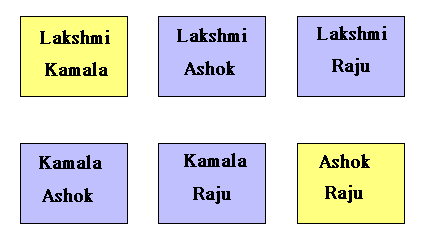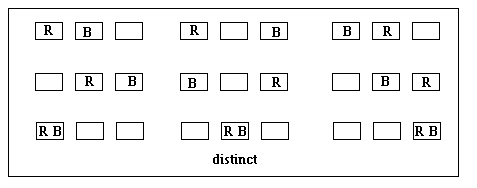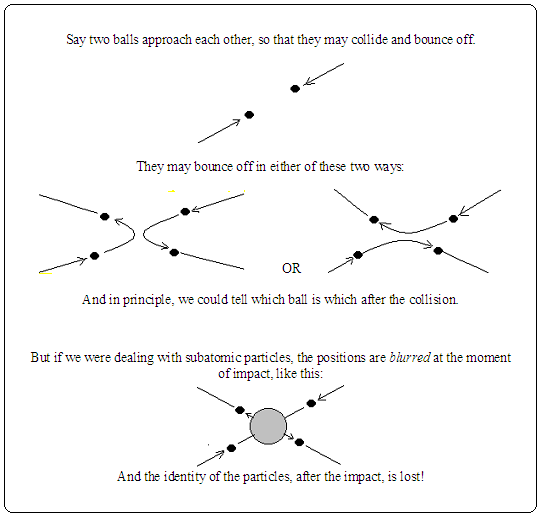
“Respected Sir,
“I have ventured to send you the accompanying article for your perusal and opinion. You will see that I have tried to deduce the coefficient …….. in Planck's law independent of classical electrodynamics. “
In 1924, Satyendra Nath Bose, 30 years of age and a reader in Physics at the Dacca University, hesitantly sent to the celebrated Albert Einstein a four-page paper on a new way to arrive at Max Plank’s formula for the spectrum of radiation from a warm object. The result was discovery of a principle fundamental to natural processes and which played a pivotal role in the rest of the development of science.
The subject of ‘black body radiation’ or radiation from an object which readily radiated heat and also absorbed radiation that fell upon it, had occupied scientists for over a quarter of a century. The context was that towards the end of the 19th century, it had begun to appear that most natural laws had been discovered. Newton had elegantly formulated the laws of motion and the trajectories of the heavenly bodies were understood. The rules followed by gases, when heated or compressed, had been worked out. The steam engine and the petrol engine had been invented. Electricity and magnetism were understood and the electric bulb, telephone and wireless had become realities. It certainly looked like science was almost there!
And then, came disturbing discoveries. First was radioactivity by Madame Curie. This was a new kind of radiation that emerged from some metals and defied explanation. Then came the virtual overturning the apple cart by Einstein. Einstein redefined our very concepts of time and measurement or even simultaneity. Thompson and Rutherford showed that the atom itself consisted of tiny particles with a negative charge around a massive, positively charged core. The existing theory could not explain how such a thing could exist. Would the two parts not attract and neutralize each other? If the electrons were going around the nucleus, like a solar system in miniature, did the present theory not say that as charged particles, they would radiate energy and slow down?
Physics seemed all tied up in knots!
And then the breakthrough came, via an answer to the old ‘black body radiation’ problem. It was known that hot objects cooled by giving off electromagnetic radiation. Visible light is a form of electromagnetic radiation. The spectrum of visible light is part of the electromagnetic spectrum. While visible light ranges from violet to red, there are ‘colours’ even beyond the violet, or the red, but these are not visible. The portion beyond the violet is more energetic and is called the ultra violet. Light less energetic than red is called the infra red.
The radiation from warm objects is mostly in the infra red. If the object were very hot, it would radiate at higher energies, and become ‘red hot’, and when even hotter, may become ‘white hot’. The theory of how this happened said that objects all contained millions and millions of tiny elemental oscillators, which were in continuous vibration and radiated energy. When the objects got hotter, the vibrations were more energetic and so was the radiation. As the object got hotter, the vibrations became more rapid and the ‘colour’ at which most of the radiation was given off moved up the spectrum. And at the same time as the object radiated energy, it also absorbed the energy that was being given off by surrounding objects. In the balance, if the surroundings were cooler, the object would lose more heat than it gained, or vice versa
Studies of such systems, consisting of huge numbers of components and which resulted in a steady, ‘average’ behaviour of the whole, was the stuff of the theories of gases, a subject which had been developed with some sophistication during the preceding century
The method, briefly, is like this. Suppose there are two men and two women, all four blindfolded, in a room. If these persons are asked to start shaking hands, at random, it is easy to see that the most frequent handshakes would be by a man with a woman. This is because each man has two women to shake hands with, but only one man, and so also each woman, in turn, has two men. We could describe the socializing like this:
Say the women are Lakshmi and Kamala and the men are Ashok and Raju. There are six possible handshakes:

We can see that there are four man-woman handshakes against only two unisex encounters!
Like men and women in a room, a container of gas has billions of atoms of the gas, with energies ranging from the very small to the very large. The only condition is that the total energy is fixed, depending on how hot the gas is. Now, if just a few of the atoms had very, very large energies, then the rest would need to share what remained and so would be quite lethargic. And again, if just a few had very low energies, then the rest would have to make up and become quite active! Working out all the possibilities leads us to find that the combination where there are a large number of atoms at nearly the same average energy is overwhelmingly the most frequent combination. Rather like the case of a man-woman handshake!
Which is why, given a volume of gas at certain energy, the gas behaves the same way all over, and never ends up with all the fast atoms bunching up on side of the container and feeling hotter!
This was the way, by assuming that the atoms or molecules in a gas or whatever, could be named, each one, like Lakshmi, Kamala, Raju, and its energy marked, like man or woman that the methods of mathematics had arrived at pretty good rules for gases. The same methods were now trying to make sense of how the ‘oscillators’ in hot object may radiate energy!
So, the scientists of the time considered an object to have oscillators at all the energies possible. From this, given the total energy, they worked out at what energy the most oscillators may be bunched, to get at what frequency the object would radiate the most! A first law that was written down was Wien’s law and it seemed to agree with experiment, up to a limit. A better law was Raleigh’s law and then the Raleigh-Jeans’ law. But the laws all worked for a portion of the radiation spectrum and not all over
This was when the celebrated Max Plank divined that if he took it that the oscillators could not be at all energy levels, but only at levels, very close together, but separated by ‘steps’, called ‘quanta’, then the equations fell into place! Voilà, Plank had cracked the black-body radiation problem and also hit upon the ‘quantum theory’.
The breakaway notion, that nature grew not continuously but in steps, set physics afire. Niels Bhor snapped up the idea and proposed his model of the atom and Einstein proposed that electromagnetic radiation was not pure wave but packets of energy. These packets themselves, later named photons, were soon detected and Physics was getting rewritten.
This was where the Indian physicist, Professor Satyendra Nath Bose penned that inspired letter to the celebrated Albert Einstein.
Satyendra Nath Bose was born in 1894 in Kolkata, the eldest of the seven children of Surendranath Bose, an Engineer in the East India Railway. Young Satyendra Nath was a keen and able scholar and impressed his teachers with his intelligence and industry. He went on to Presidency College, Kolkata where he had the gifted Jagdish Chandra Bose as a teacher and a vibrant group, including Megnad Saha, as fellow students. After he took his masters degree in 1915, he and some others, motivated by public spiritedness as well as by nationalism, pressed for the opening of a centre for advanced Physics and Mathematics in Kolkata University. In 1916, this effort succeeded and S N Bose worked there as lecturer in Physics for the next five years.
In 1921, he was appointed as reader in Physics at Dacca University, which was part of the province of Bengal in India at the time. At Dacca, Bose continued his work both in physics as well as many things to facilitate the study of physics by general Indian student. One of these was to translate into English the latest in books and research papers, which otherwise appeared in French or German. It was in the course of this effort that Bose translated Einstein’s papers on the General Theory of Relativity. The translation rights, in fact had been given to Methuen of England, who protested. But Einstein himself agreed and the translation was allowed to appear.
In physics, Bose kept abreast with the latest the world over, particularly in the exciting area of ‘black body radiation’. As we have just seen, Plank had studied hot objects as a collection of ‘oscillators’ and had come to an exact expression for the radiation spectrum by proposing that the energy levels of the oscillators were ‘quantised’. Einstein was not quite satisfied with the way this was done and introduced a refinement of saying that the radiation itself consisted of ‘quanta’ of energy, the photons. Einstein considered the radiation inside a cavity to be like a ‘low pressure gas of photons’, and with the help of Wiens’ law, was able to come to the same expression for the energy spectrum
Bose had been going through all this and yet, he felt that even what Einstein had done was a bit contrived, by depending on Wien’s law and did not arise naturally from just a gas of photons. So he devised yet another way of arriving at Plank’s formula, but with no assumption but that photons of different energies had distributed themselves in a cavity at a given temperature.
Einstein, in fact, had used statistical methods similar to the ones used to derive the gas laws, treating the photons in the cavity in the same manner as the molecules of gas in a container. An implicit assumption in this is that each molecule, in principle, could be identified. Rather like the Lakshmi, Kamala, Ashok and Raju of the example we saw earlier. Bose considered the photons in his gas to be ‘identical’ or ‘indistinguishable’. This immediately makes a big difference in the way distributions work out. Take an example of a Red and a Blue ball being distributed in three compartments. This is possible in nine ways, like this.

But if the balls were both the same colour, then the set of the first and third, above, and the fourth and sixth distributions become the same. Now, only six distributions are possible, like this:

What Bose was doing was to work out a number for all the possible energy states that were possible in the container of the photon gas, something like the compartments in the example, and to see how in how many ways the photons, like the balls in the example, could be distributed in the energy states. We can see that recognizing that the photons were identical was crucial.
Another thing that Bose provided for was that the number of photons, unlike the number of balls, was not fixed. Photons could arise at will, subject only to the condition that the total energy of all the photons was constant. So, with these two conditions, and another detail that each photon could exist in either a ‘left handed’ form or a ‘right handed’ form, all rooted in fact and not assumptions, Bose worked out the most likely distribution of energies and arrived at the same Plank’s Law!
This was an important result that, apart from there being packets or particles of energy, the photons, these photons behaved like identical and indistinguishable entities!
It is not apparent that Bose had anticipated the momentous consequences of his flash of insight in this paper that he had forwarded to Einstein, that fourth of June 1924. The Philosophical Magazine had already turned it down for publication and Bose now hoped that Einstein may find more value in the paper and agree to get it published in a German Journal, at least on the strength of the author being the one who had translated some of the master’s work into English!
It is to the great Einstein’s credit that he read carefully this paper from an obscure scientist in India and saw at once that what Bose was saying had the greatest significance. He translated the paper into German himself and had it published in Zeitschrift fur Physik, with his own comment about the importance of paper. A few weeks later, Einstein wrote a sequel to Bose’s paper and followed up with important work that took off from Bose’s work itself!
The paper set off a cascade of research worldwide. The idea of the quantum had barely taken root in the world of physics. This was a refinement in our thinking, which became significant only at very small dimensions. But this difference in the very small scale is vital for correct understanding on the larger scale and much of the modern world, transistors, lasers, nuclear power, being examples, has followed from this understanding of quantum effects.
In everyday life, we see no ‘step-wise’ increase in the speed of a motorcar, for instance. The reason is that the ‘steps’ are far too near together to be noticed. But when we deal with things on the atomic scale, the masses are so low that the quanta are a good part of the total energy. The way nature behaves at the very smalllimit is thus quite different from ordinary experience. As dimensions get larger, these quantum effects get less significant and the rules begin to merge with the laws of classical physics.
One of the features of the atom-scale world is that it is not possible to exactly pinpoint the position of an object, the smaller the object, the greater the uncertainty. When we are dealing with large entities, like billiard balls bouncing off one another, we can clearly make out one ball from another. This ‘billiard-ball’ model of gases, with the old statistics, where molecules of a gas were considered distinguishable, was successful with the gas laws, because molecules are still large enough to be distinguished, in principle. But when we enter the world of subatomic particles, or photons, the blurring of the position of the particles prevents us from knowing which particle is which, after a collision. An example is in the picture:

This uncertainty of position was an aspect of quantum mechanical behaviour that it still took some years for scientists to understand. We can see that once such a thing is understood about very small particles, it follows that the particles need to be treated as indistinguishable. The great significance of Bose’s discovery is that he anticipated the development of quantum mechanics with the insight that particles on the small scale would follow the statistics of indistinguishable particles! And having established this property of nature, he surely set up signposts that actually expedited the discoveries that should have gone before!
The development of Bose’s ideas, first by Einstein himself and then by many others, laid the foundation of a whole field called quantum statistics, a cornerstone of later day physics. Bose, and later Einstein, had worked on one category of the fundamental particles and the rules for these particles are now known as Bose-Einstein statistics. Some remarkable properties could be predicted for these particles, one of them being that at low energies, they tended to all have the same energy state. Just like the molecules of steam, when they cool, condense to form water, Einstein said that Bosons, when brought to lower energies, would condense to this state of trying to all have the same energy level. A consequence of this is the possibility of superfluidity, or flowing of a substance without friction, because adjacent particles tend to follow, rather than oppose a particle in motion! This was realized, some years later, when Helium whose atom is a Boson, could be cooled to low enough a temperature!
While S N Bose thus entered the ranks of Physics’ unquestioned greats, he was honoured by several universities with doctorates and degrees. He was head of the Department of Physics at Dacca from 1926, for nearly 25 years. The partition of India was a blow to him, as all Bengal was his home. In 1945 he was appointed the Khaira professor of Physics in Kolkata University, which post he held till 1956. In 1958, he was elected a Fellow of the Royal Society.
Like many of the very talented, S N Bose had varied interests. . His scientific work covered areas as far afield as geology and biochemistry. He was a gifted teacher and devoted to his students. Languages came naturally to him and he had deep literary interests. He even worked for and introduced the teaching of physics to post-graduate students in Bengali. He served as a member of the Rajya Sabha and played a role in shaping the country’s science policy.
He died in Kolkata, in 1974, at the age of 80.
------------------------------------------------------------------------------------------